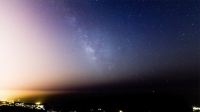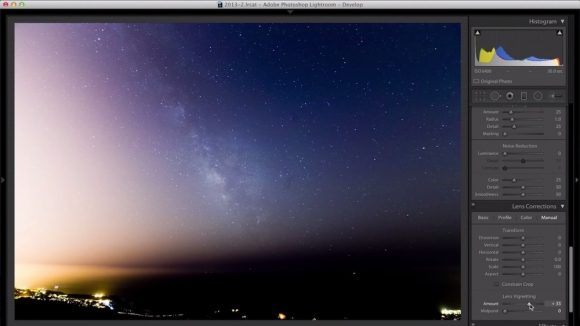Learn how to create stunning astrophotography even in light-polluted areas
posted Thursday, July 31, 2014 at 2:39 PM EDT

Photographing the night sky -- also called astrophotography -- is a challenging endeavor. Depending on what exactly it is you want to photograph -- a specific constellation of stars, the milky way, another galaxy etc. -- you first need to find out the best time and location for your photo, which depends on a lot of factors. Then, you need to figure out how to set up your gear for the best results, and finally you'll have to process your images to look good.
Astrophotography, when done correctly, can also be highly rewarding, as it can yield some of the most stunning imagery you've ever seen. The pinnacle of astrophotography is probably photographing the milky way, our very own galaxy. Depending on your location, your best chance of seeing the milky way could be at any time of the year, so first you'll have to figure out when you should set out on your adventure.
Then, you'll need to find a place that's as dark as possible, so the night sky is actually visible. This may not be an easy task, especially if you're living in an urban area with high light pollution. Now, naturally, you'd think that astrophotography is entirely impossible in big cities, but that's not actually true, as Ian Norman from Lonely Speck demonstrates in the video below.

In order to capture the night sky in a light-polluted area, you'll need to resort to a technique called 'expose to the right,' or ETTR, for short. In essence, what you do is to expose your image in such a way that the histogram is shifted all the way to the right -- to the highlights -- which allows the camera to gather as much light as possible (though be careful not to overdo it; you don't want completely blown out highlights). Then, during post-processing, you can dial down the exposure and reveal details in the sky by heavily boosting the contrast.
As crazy as it may sound, 'overexposing' your image at a very high ISO speed -- Ian recommends 6,400 -- and then heavily processing the results will actually yield better images than keeping the ISO and exposure down. And when you're shooting RAW (which you should) and use a software like Adobe Lightroom, it's actually not that complicated to do. All you really need to figure out is the best time and location for taking your photos.
Check out Ian's video below for a step-by-step demonstration for creating stunning astrophotographs in light-polluted locations:
(via PetaPixel)

